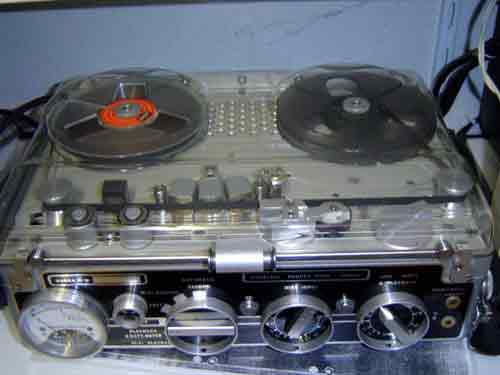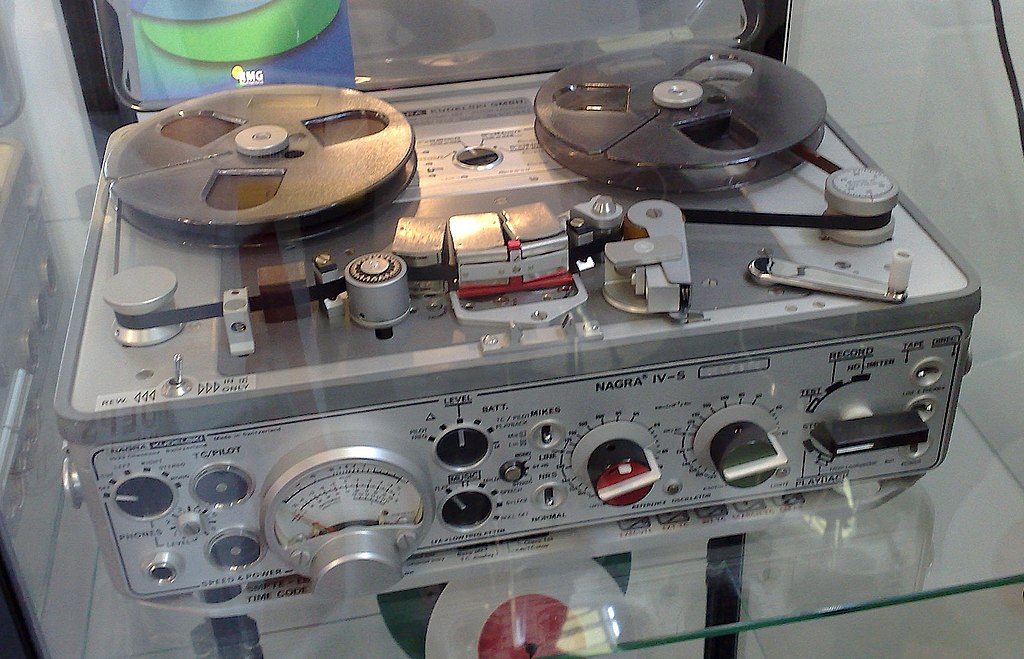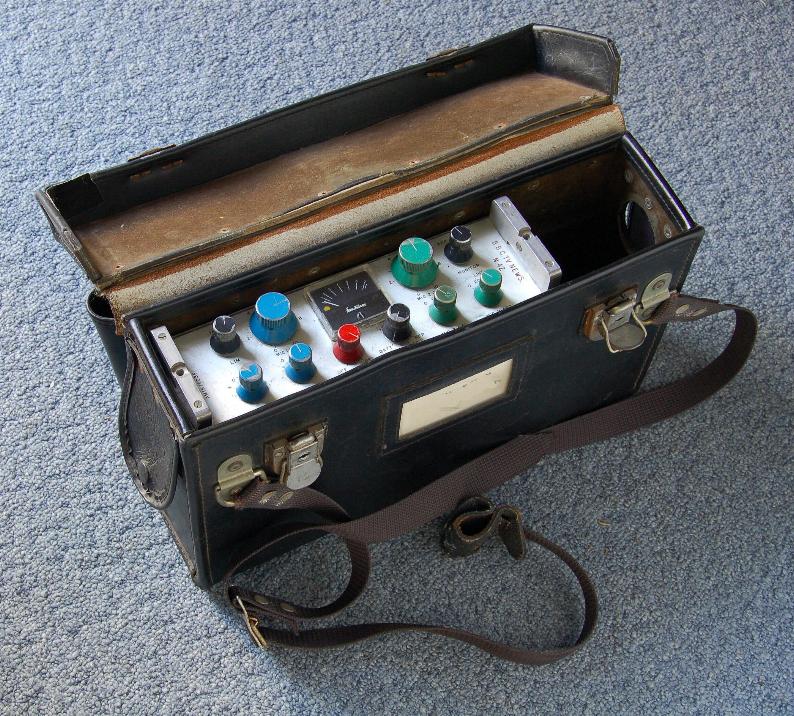Alexam":1hob98rn said:
In the old days (really old days) we used to film with Super 8 and 16mm using reel to reel tape recorders and rifle mikes. Then we would sync the film with the sound. The fun came when editing as the sound and film frames were several frame apart, so often used cut-away shots. I still have the camera and several tape recorders, but no idea why I am holding on to them. AS an old sound man Eric, you may recall the Farnell-Tandberg system, using the Model 11 Half track portable reel to reel with tone generator. I also have the Sony TC 630 and 377 and the last one bought was the Phillips N4422 fully variable speed reel to reel recorder. Only used that for a few months before our club packed up and the hobby slowed right down. Great fun whilst it lasted.
I used to lug one of these about:
And these:
That IV-S is one of the last ones made, with the timecode module just visible tucked under the front.
The Nagra 3 (top) used Pilotone, which for UK TV was a 50Hz, crystal-generated signal, recorded on the tape. The camera had a similar crystal so that its frame rate was accurate and consistent. The audio tapes were transferred to 16mm "sepmag" sprocketed tape, with the recorder locked to the pilotone on the Nagra tapes. So you ended up with a frame of picture matching a "frame" of audio, on the same sized stock. Film editors could run both sound and picture through the same machinery.
Film sound was almost never* on the same physical stock as the pictures, either until the showprints were made for cinema distribution, or it was transferred to videotape, for TV transmission. If TV transmission was straight off film (no videotape) then it was almost always two separate pieces of stock - picture and sound, locked together in sync.
Occasionally you see a BBC film leader on TV, usually when they want to pretend something is film in a comedy. If there's a white St. Andrew's cross visible for a split second at the start, that's the frame we used to use for synching sound and picture together. There was also a blip of 1kHz tone on the soundtrack, as "4" on the leader (the countdown) came up. This allowed the sound supervisor to instantly check sound and pictures were correctly in synch, before fading anything up.
Happy days.
E.
*TV news was the only exception, using "commag" which was reversal stock (Ektachrome 160T usually), with a magnetic stripe. The sound recordist had to stay physically wired to the camera and had a box that was basically a tape recorder with everything except the motors and the tape in it:
The yellow spot meant the meter wasn't considered trustworthy enough by BBC Engineering department !
News footage was usually cut straight from the camera. It was normal for the sound cuts to lead the picture awkwardly, and for there to be large gaps (which we filled live on-air from sound effects discs). I've done a lot of live news transmissions where the editor would come in and say "we need some traffic at the start, and a small crowd at 342ft" You'd cue up the discs and he'd tap you on the shoulder at the right moment... all live, of course.



































